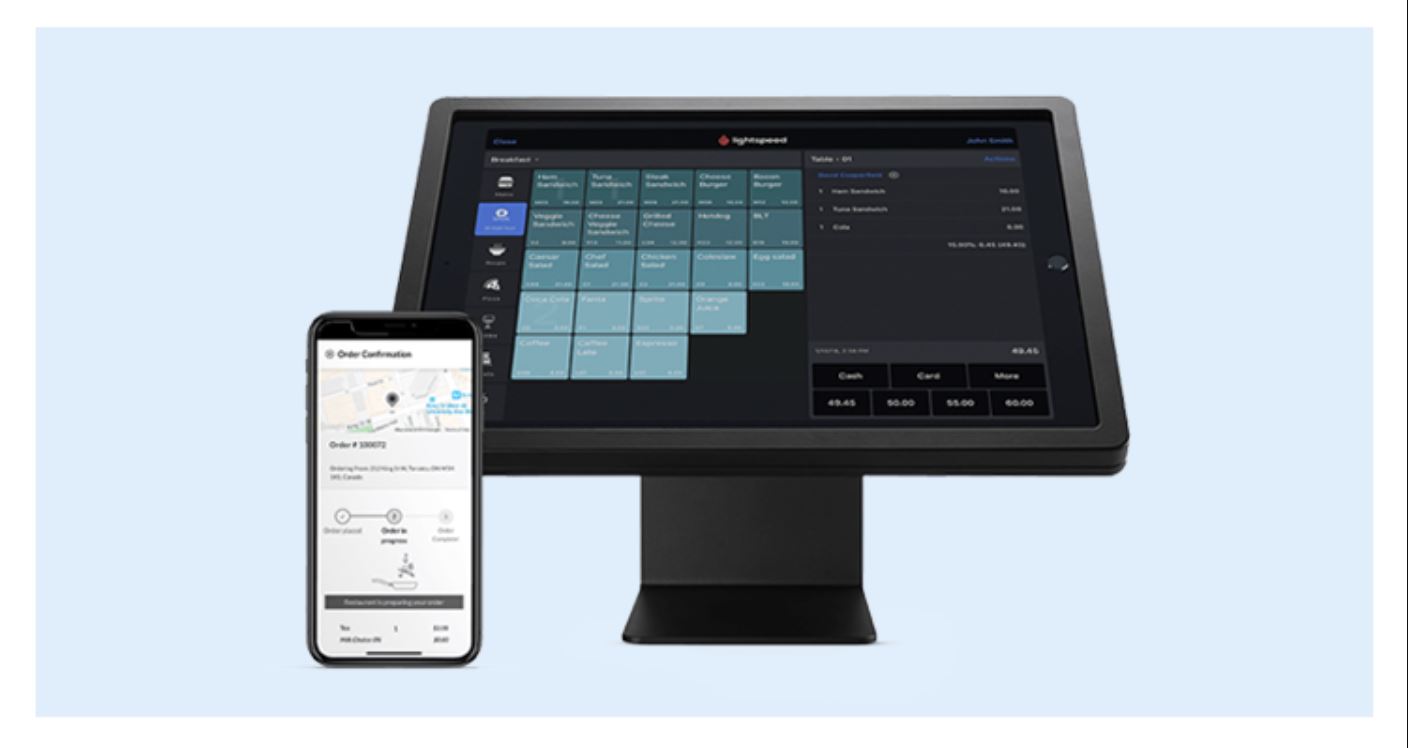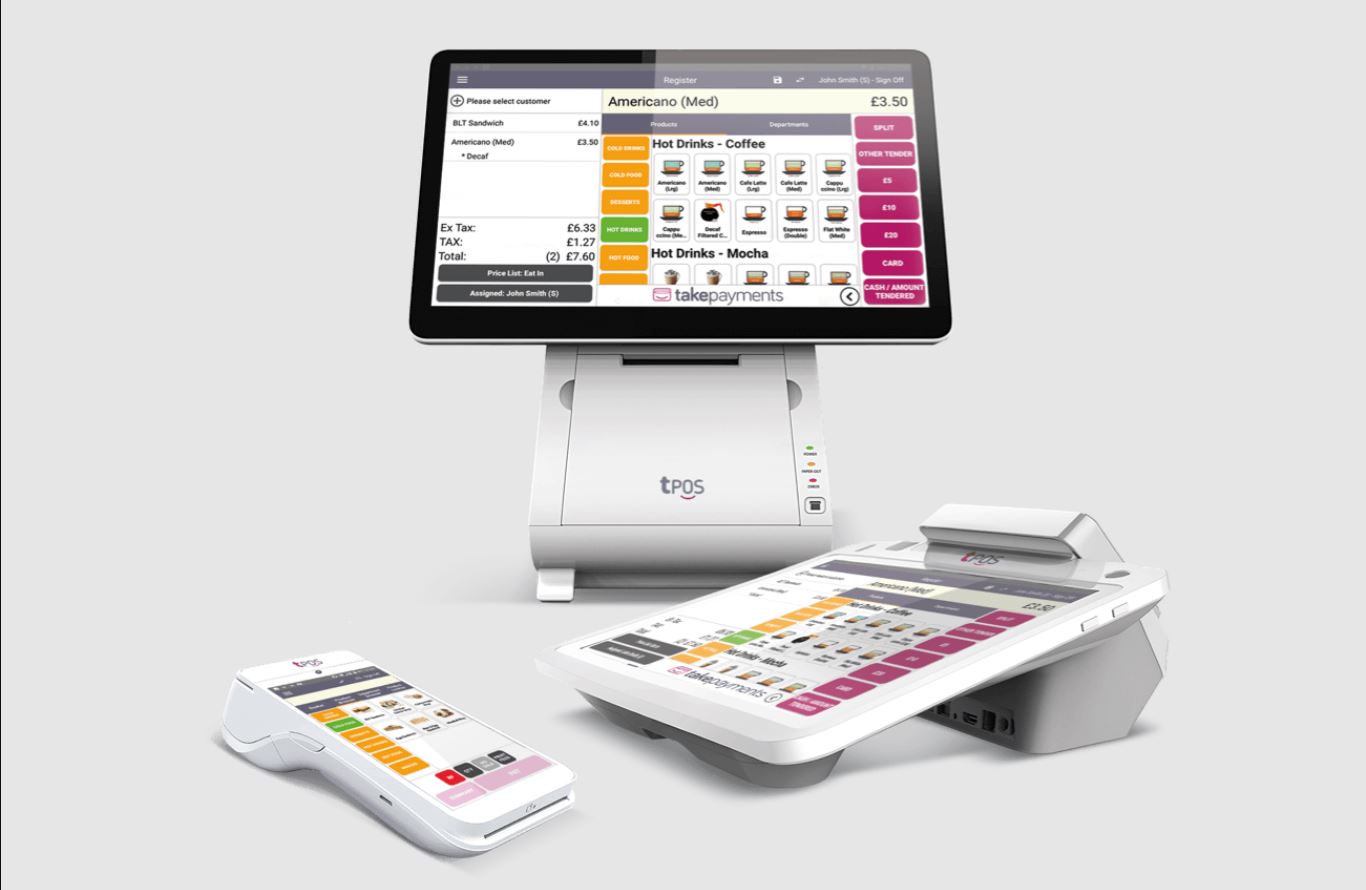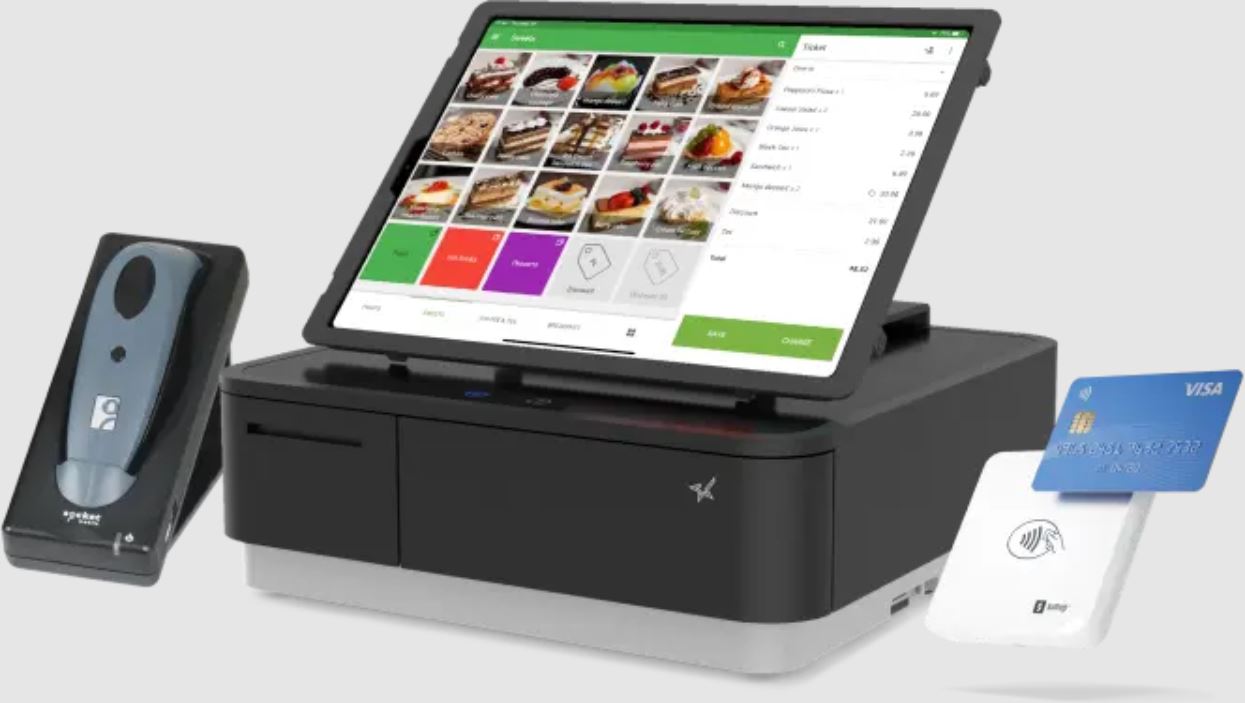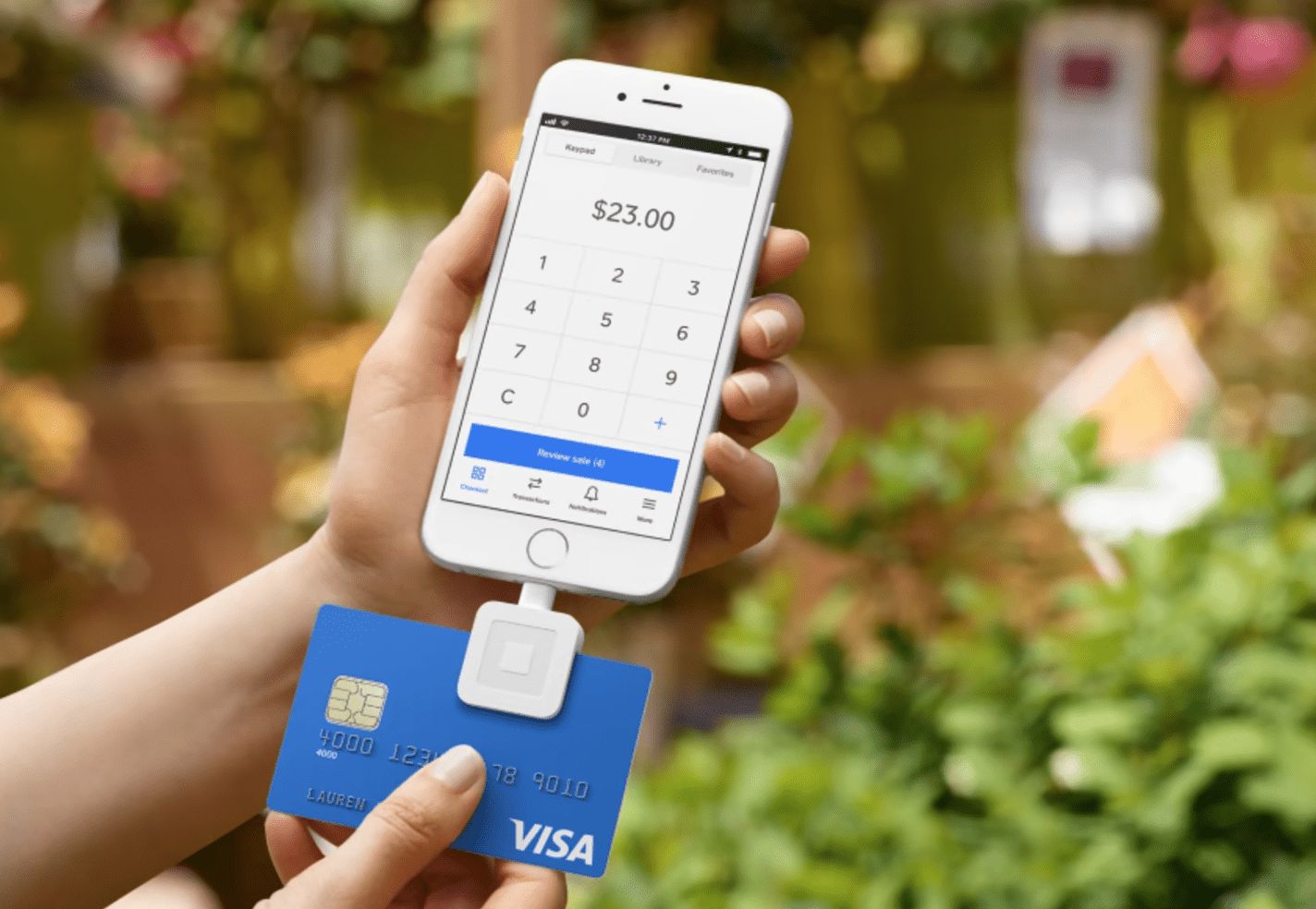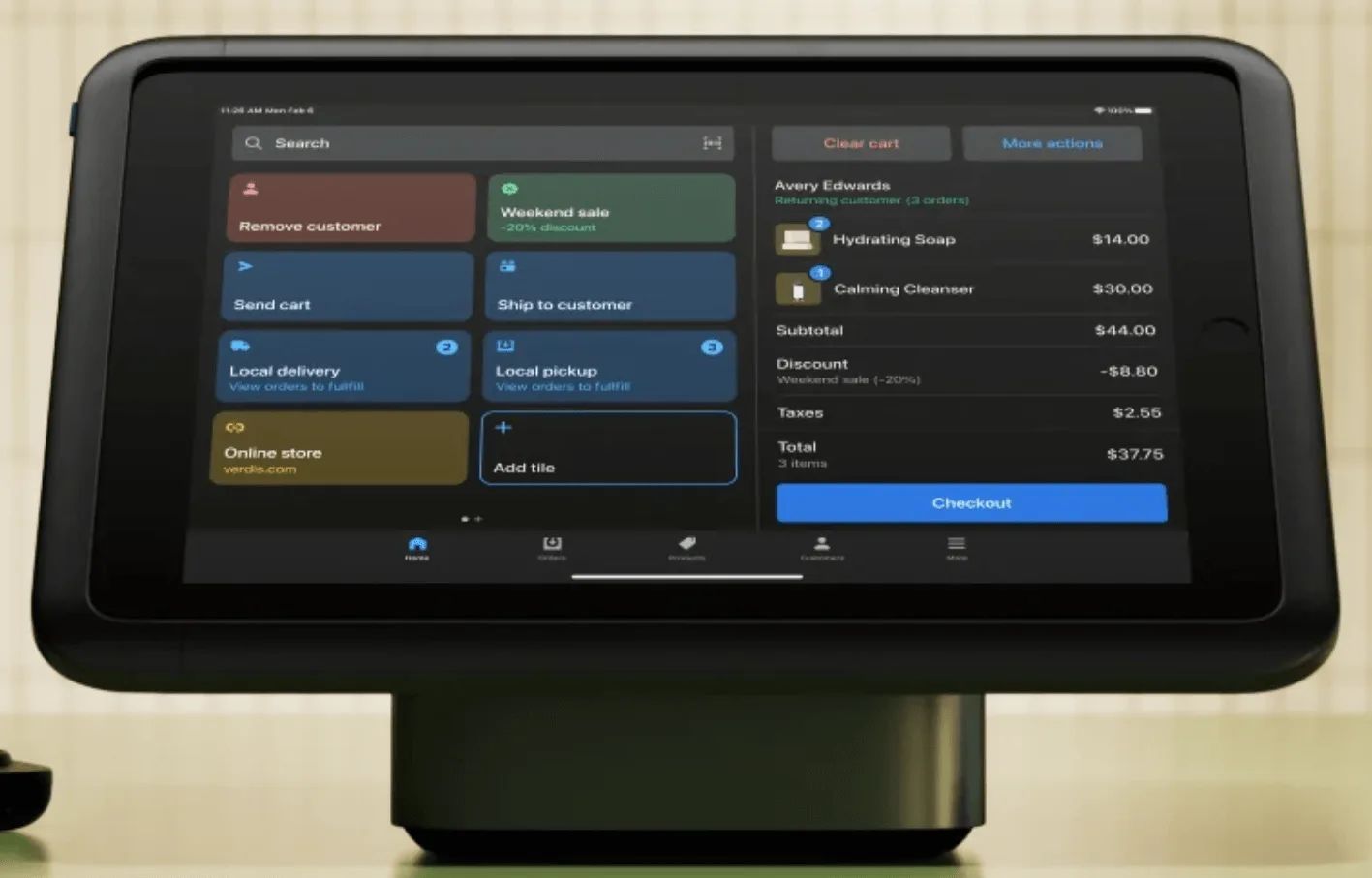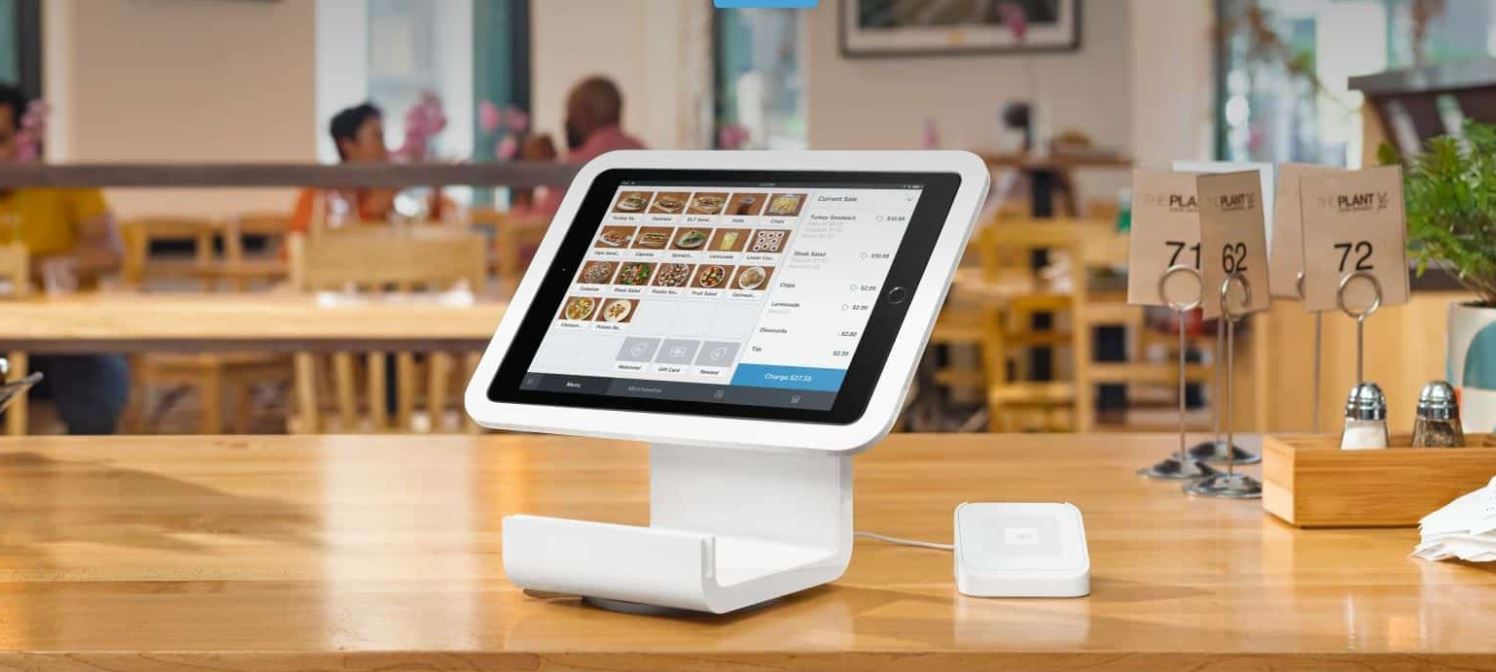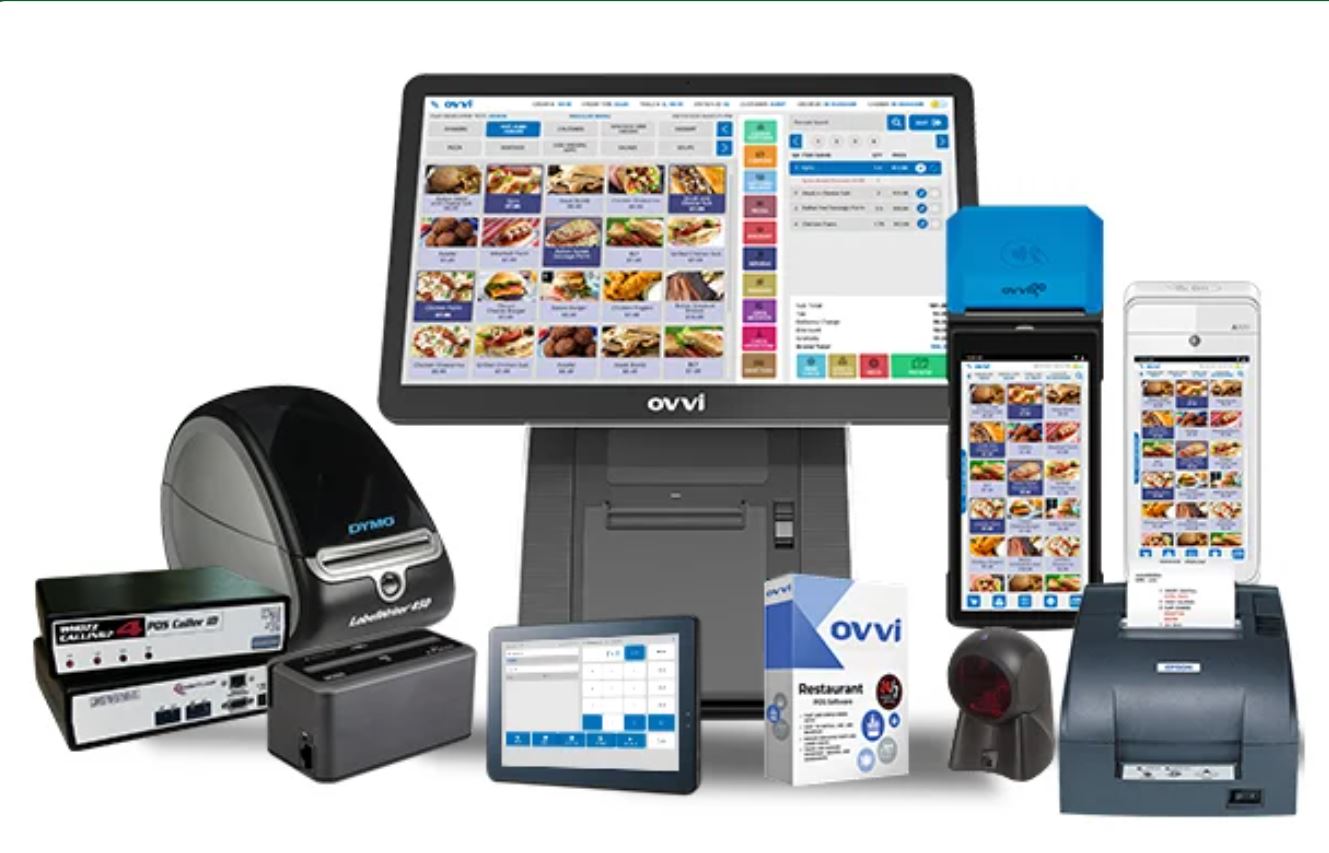Introduction
Welcome to the world of point of sale (POS) systems! In today’s fast-paced business environment, having an efficient and reliable POS system is integral to the success of any retail or hospitality establishment. Whether you own a small boutique, a bustling restaurant, or a large chain store, a POS system can streamline your operations, increase productivity, and enhance the overall customer experience.
In this comprehensive guide, we will explore the ins and outs of creating a POS system from scratch. From understanding the basics to setting up and customizing your system, we’ll cover everything you need to know.
A POS system is essentially a combination of hardware and software that enables businesses to process transactions and manage various aspects of their operations, such as inventory, sales, and customer data. Gone are the days of using traditional cash registers and manual record keeping. POS systems have revolutionized the way businesses handle transactions and track important information.
While the primary function of a POS system is to facilitate sales transactions, modern systems offer a wide range of features and capabilities. From inventory management and employee scheduling to customer relationship management (CRM) and analytics, a well-designed POS system can serve as the central hub for all your business operations.
But with the myriad of options available in the market, choosing the right POS system can be overwhelming. Should you opt for a cloud-based system or an on-premise solution? Which hardware devices are necessary, and which ones are optional? How do you integrate payment solutions with your POS system? These are just some of the questions that we will address in this guide.
So, whether you’re starting a new business or looking to upgrade your existing POS system, this guide is here to help you make informed decisions. By the end of this journey, you will have the knowledge and confidence to create a POS system that caters to your specific needs and sets you up for long-term success.
Part 1: Understanding the Basics of a POS System
Before diving into the intricacies of creating a POS system, it’s essential to have a solid understanding of the basics. A POS system is a combination of hardware and software that enables businesses to process transactions and manage various aspects of their operations. Let’s explore the key components and functions of a POS system.
1. Point of Sale Terminal: The central component of a POS system is the point of sale terminal. This is the device that allows cashiers or staff members to input sales information, such as the quantity and price of items purchased. Modern POS terminals are usually touch screen-based, providing a user-friendly interface for faster and more accurate transactions.
2. Barcode Scanner: Barcode scanners are essential for quickly and accurately scanning product barcodes and retrieving item information. They eliminate the need for manual data entry, reducing errors and enhancing efficiency.
3. Receipt Printer: A receipt printer is used to print detailed receipts for customers after a transaction is completed. Receipts typically include the list of purchased items, prices, taxes, and the total amount paid.
4. Cash Drawer: Cash drawers are used to securely store cash and coins received from customers. They typically integrate with the point of sale terminal and can be automatically opened after a cash transaction is completed.
5. Payment Processing: Integration with payment processing solutions is crucial for accepting various forms of payment, such as credit cards, debit cards, and mobile wallet apps. POS systems should support secure payment processing to protect customers’ sensitive payment information.
6. Inventory Management: POS systems often include features for effective inventory management. This allows businesses to track stock levels, manage reorder points, and receive real-time updates on inventory availability. Inventory management features help optimize stock levels and avoid stockouts.
7. Reporting and Analytics: POS systems provide businesses with valuable insights through reporting and analytics. You can generate reports on sales trends, top-selling items, employee performance, and more. This data enables you to make informed decisions about inventory, pricing, and marketing strategies.
8. Customer Relationship Management: Some POS systems offer CRM capabilities, allowing businesses to collect and store customer data. This includes information such as contact details, purchase history, and preferences. CRM features help businesses tailor marketing efforts, provide personalized customer experiences, and foster long-term customer loyalty.
Now that we have a solid grasp of the basic components and functions of a POS system, it’s time to delve deeper into the hardware and software options available. In the next section, we will explore the different hardware components required for a fully functioning POS system.
Part 2: Hardware and Software Components of a POS System
When creating a POS system, you need to consider both the hardware and software components. The hardware consists of the physical devices and equipment, while the software comprises the applications and programs that run on the system. Let’s explore these components in more detail.
Hardware Components:
1. Point of Sale Terminal: The point of sale terminal is the core hardware component of a POS system. It is typically a touchscreen device that allows cashiers to input sales information and interact with the system. These terminals come in various forms, including all-in-one systems or separate components like a monitor, cash drawer, and receipt printer.
2. Barcode Scanner: Barcode scanners streamline the sales process by quickly scanning barcodes on products. They come in different types, such as handheld scanners, presentation scanners, or integrated scanners built into the point of sale terminal. Choosing the right scanner depends on your business’s specific needs and the volume of sales.
3. Receipt Printer: A receipt printer is used to print transaction details for customers. Thermal printers are commonly used in POS systems, as they produce high-quality receipts quickly and without the need for ink cartridges. Consider the printing speed, paper roll size, and connectivity options when choosing a receipt printer.
4. Cash Drawer: Cash drawers provide a secure storage space for cash and coins. They are connected to the point of sale terminal and can be automatically opened after a sale or manual authorization. Look for cash drawers with features like sturdy construction, locking mechanisms, and adjustable compartments.
5. Payment Processing Devices: To accept different forms of payment, you’ll need payment processing devices. These include credit card readers, debit card readers, and contactless payment terminals. Ensure that your chosen payment devices are compatible with your POS system and compliant with the latest security standards.
Software Components:
1. Operating System: The operating system is the foundation of the software components. It manages the overall operation of the POS system and provides a platform for running applications. Popular operating systems for POS systems include Windows, iOS, and Android.
2. POS Software: The POS software is the heart of the system, responsible for managing sales transactions, inventory, customer data, and reporting. Look for software that meets your specific business needs, offers user-friendly interfaces, and integrates well with your hardware components.
3. Inventory Management Software: Inventory management software helps track and manage stock levels, reordering, and product information. It allows you to optimize inventory, prevent errors, and automate processes like stock count and purchase orders. Choose software that integrates seamlessly with your POS system for accurate and up-to-date inventory data.
4. Integration Tools: Integration tools are essential for connecting various software applications and systems. They facilitate smooth data flow between different components, such as payment processors, accounting software, or CRM systems. APIs and third-party integration tools enable seamless communication and streamline business operations.
By understanding the hardware and software components of a POS system, you can make informed decisions when choosing the right tools for your business. In the following sections, we will delve into the specific considerations for selecting hardware components and software options that suit your needs.
Part 3: Choosing the Right Hardware for Your POS System
When creating a POS system, choosing the right hardware components is crucial for seamless operations and excellent customer service. Each piece of hardware plays a specific role in the overall system, and selecting the appropriate devices will ensure efficiency and reliability. Here are some factors to consider when choosing the hardware for your POS system.
1. Point of Sale Terminal: The point of sale terminal is the centerpiece of your hardware setup. Consider factors such as the size and form factor, processing power, memory, and connectivity options. If you have limited counter space, an all-in-one terminal with a built-in computer, touchscreen, and peripherals may be a convenient choice.
2. Barcode Scanner: Barcode scanners come in various types, including handheld and fixed-mount scanners. Consider the scanning speed, compatibility with different barcode types, and ease of use. For businesses with high transaction volumes, investing in a fast and reliable scanner will speed up the checkout process and minimize errors.
3. Receipt Printer: Choose a receipt printer that meets your printing requirements in terms of speed, print quality, and connectivity options. Thermal printers are popular choices as they produce clear and durable receipts without the need for ink cartridges. Consider whether you need a printer with auto-cutting feature or a manual tear-bar.
4. Cash Drawer: Cash drawers are available in various sizes and designs. Consider the number of compartments, durability, and locking mechanisms. Ensure that the cash drawer is compatible with your point of sale terminal and meets your security requirements, such as having a lock and key or an electronic lock system.
5. Payment Processing Devices: Choose payment processing devices that support the payment methods you intend to accept. This may include credit card readers, chip card readers, NFC/contactless payment terminals, and mobile payment devices. Ensure compatibility with your chosen payment processor and check for security certifications.
6. Other Peripherals: Depending on your business needs, you may need additional peripherals such as a customer display, kitchen printer, and customer self-service kiosk. Consider the functionality and compatibility of these peripherals with your other hardware components.
7. Durability and Warranty: Since the POS system will be used regularly in a commercial environment, it’s crucial to choose hardware that is durable and designed to withstand continuous use. Check for warranties and after-sales support to ensure any hardware issues can be resolved promptly.
8. Scalability and Future Proofing: Consider your business’s future growth and expansion plans. Choose hardware that can be easily upgraded or expanded as your business grows. This will save you from costly hardware replacements in the future.
By carefully considering these factors, you can choose the right hardware components that meet your specific business needs and ensure a reliable and efficient POS system. In the next section, we will explore the different software options available for your POS system and the factors to consider when selecting the software.
Part 4: Software Options for Your POS System
Choosing the right software for your POS system is crucial in creating a seamless and efficient point of sale experience. The software you select should not only meet your business requirements but also offer user-friendly interfaces and robust features. Let’s explore some key considerations when evaluating software options for your POS system.
1. Point of Sale Software: The point of sale software is the core component of your system. Look for software that offers a user-friendly interface, intuitive navigation, and easy integration with your chosen hardware components. Consider features such as inventory management, sales reporting, customer management, and payment processing capabilities. Ensure that the software is scalable to accommodate your business’s future growth.
2. Cloud-based vs. On-premise: POS software can be either cloud-based or installed locally on your hardware. Cloud-based software offers the advantage of remote access, automatic updates, and data backup. On-premise software provides more control and security but requires local server infrastructure. Evaluate your business’s needs and budget to determine which option is most suitable.
3. Compatibility and Integration: Ensure that the POS software you choose integrates seamlessly with your hardware components, payment processors, and other essential software applications. Smooth integration eliminates data inconsistencies, reduces manual data entry, and allows for streamlined operations. Check for compatibility with industry-standard hardware devices and popular platforms.
4. Reporting and Analytics: Robust reporting and analytics capabilities are vital for gaining insights into your business performance. Look for software that provides real-time sales data, sales trends, inventory analysis, and employee performance metrics. Having access to comprehensive reports enables data-driven decision-making and helps identify opportunities for growth.
5. Security and Compliance: As your POS system handles sensitive customer payment information, security should be a top concern. Choose software that adheres to industry-standard security measures, such as data encryption and Payment Card Industry Data Security Standard (PCI DSS) compliance. Also, consider software that allows for user access controls and restricts sensitive information to authorized personnel.
6. Ease of Use and Training: User-friendly software is crucial for smooth operations and efficient staff training. Look for software with a simple and intuitive interface that minimizes the learning curve. Consider the availability of user guides, tutorials, and customer support to ensure your staff can quickly adapt to the new system.
7. Customization and Flexibility: Every business has unique requirements, so choose software that allows for customization and flexibility. Look for options to tailor the interface, menus, and workflows to fit your specific needs. The ability to add custom fields, product categorization, and pricing options can greatly enhance your POS system’s effectiveness.
8. Cost and Vendor Support: Consider your budget when evaluating software options. Compare pricing models, including licensing fees, support costs, and subscription plans. Also, assess the level of support provided by the software vendor, including training resources, technical assistance, and regular software updates.
By carefully considering these factors, you can select the software that best suits your business needs and sets you up for success. In the next section, we will explore the process of setting up your POS system and the key steps involved.
Part 5: Setting Up Your POS System
Setting up your POS system correctly is essential for smooth operations and efficient customer service. Whether you are implementing a new system or upgrading an existing one, there are several key steps involved in the setup process. Let’s explore these steps to ensure a successful implementation.
1. Hardware Assembly: Begin by assembling and connecting your hardware components. Follow the manufacturer’s instructions to ensure proper connections and placement. Test each device to ensure they are functioning correctly and communicating with the point of sale terminal.
2. Software Installation: Install and configure the POS software onto your chosen hardware. Follow the instructions provided by the software vendor or consult any user manuals or setup guides. Customize the software settings to match your business requirements, including tax rates, payment methods, and receipt layouts.
3. Database Setup: If your POS software requires a database, create and configure it based on the software’s instructions. Set up product categories, pricing, and inventory information in the database. Ensure that the database is backed up regularly to prevent data loss and facilitate easy recovery.
4. Employee Training: Train your employees on how to use the POS system effectively. Provide comprehensive training sessions or tutorials on performing transactions, scanning barcodes, processing payments, and accessing key features like inventory management and reporting. Regularly evaluate employee performance and provide ongoing training and support as needed.
5. Inventory Import: If you have an existing product inventory, import the data into the POS software. Use the provided import tools or file formats to ensure accurate and efficient data transfer. Double-check the imported data to ensure all products and their corresponding information are correctly reflected in the system.
6. Test Transactions: Conduct test transactions to ensure the system is processing sales accurately. Perform various types of transactions, such as cash payments, card payments, and returns, to confirm that the system handles them correctly. Verify that receipts are printing legibly and that inventory quantities are updated accordingly.
7. Integration with Payment Processors: Set up integration between your POS system and the chosen payment processor(s). Configure the payment settings, including account details and transaction methods. Test different payment scenarios to ensure successful processing and accurate reporting.
8. Network and Security: Ensure that your POS system is connected to a secure network. Set up firewalls, antivirus software, and other security measures to protect sensitive customer data. Implement user access controls and regularly update passwords to prevent unauthorized access.
9. Ongoing Maintenance: Regularly update your POS software to the latest version to ensure access to new features, bug fixes, and security patches. Perform routine maintenance tasks, such as cleaning devices, replacing printer paper and ink, and monitoring hardware functionality.
By following these steps, you can effectively set up your POS system and ensure that it is ready for day-to-day operations. In the next section, we will explore how to integrate payment solutions with your POS system to provide a seamless checkout experience for customers.
Part 6: Integrating Payment Solutions
Integrating payment solutions with your POS system is crucial for providing a seamless and convenient checkout experience for customers. By offering multiple payment options and ensuring secure transactions, you can enhance customer satisfaction and streamline your revenue collection process. Let’s explore the key considerations when integrating payment solutions with your POS system.
1. Payment Processor Selection: Choose a payment processor that aligns with your business needs and provides the required payment methods. Consider factors such as transaction fees, processing speed, security, and customer support. Popular payment processors include Stripe, PayPal, Square, and Authorize.Net.
2. Payment Terminal Integration: Configure your POS system to integrate with the selected payment terminals or devices. The integration process may vary depending on your POS software and payment processor. Follow the instructions provided by both parties to establish a secure connection.
3. Contactless and Mobile Payments: Ensure that your POS system supports contactless payments, such as NFC (Near Field Communication) or mobile wallet payments, like Apple Pay or Google Pay. Enable these payment options on your payment terminals and educate your staff on how to process them.
4. Card Payment Security: Take measures to ensure the security of card payments. Choose payment processors that comply with the Payment Card Industry Data Security Standard (PCI DSS) to protect customer card data. Avoid storing sensitive card information locally and enable tokenization or encryption for enhanced security.
5. EMV Compliance: Make sure your payment terminals are EMV (Europay, Mastercard, and Visa) compliant. EMV chips offer stronger security and reduce the risk of credit card fraud. Upgrading to EMV-compliant terminals may require additional hardware or software updates.
6. Split Payments and Tips: If your business accepts split payments or allows customers to add tips, ensure that your POS system supports these features. Configure the software to handle split payments accurately, split funds across different payment methods, and calculate and record tips correctly.
7. Receipts and Customer Signatures: Set up your POS system to generate electronic receipts for customers. If required, integrate digital signature capture for card transactions to streamline the customer experience. Ensure that the receipts include all necessary transaction details, such as itemized purchase information and payment confirmation.
8. Testing and Training: Test the integration thoroughly by conducting test transactions using various payment methods and scenarios. Train your staff on properly processing different types of payments and troubleshooting common payment-related issues. Regularly conduct staff training to keep them updated on new payment features and secure practices.
By effectively integrating payment solutions into your POS system, you can provide customers with convenient payment options and ensure secure transactions. In the next section, we will discuss the importance of customizing your POS system to meet your specific business requirements.
Part 7: Customizing Your POS System
Customizing your POS system is essential to tailor it to your specific business requirements and optimize your operations. By customizing the system, you can streamline workflows, improve efficiency, and enhance the overall customer experience. Let’s explore key areas where customization can be beneficial and how you can customize your POS system.
1. User Interface: Customize the user interface of your POS system to match your brand aesthetics and improve usability. Modify color schemes, fonts, and button layouts to create a visually appealing and intuitive interface. Consider creating a user-friendly menu structure that allows for easy navigation between functions and reduces training time for new employees.
2. Product Catalog: Customize your product catalog to match your specific inventory. Organize products into categories and subcategories that make sense for your business. Add detailed product descriptions, images, and pricing information. This customization simplifies the checkout process and allows for accurate inventory tracking.
3. Pricing and Discounts: Configure your POS system to handle various pricing strategies and discounts specific to your business needs. Set up different price levels, promotional discounts, special offers, and loyalty program discounts. Customizing these features enables you to implement targeted pricing strategies and reward loyal customers.
4. Inventory Management: Customize your inventory management settings to optimize stock control and ensure accurate tracking. Set up reorder points, low stock alerts, and automatic notifications for out-of-stock items. Customize your system to accommodate different units of measurement, item variants, and batch tracking if applicable to your business’s inventory needs.
5. Reporting and Analytics: Customize your reporting capabilities to generate insightful reports that suit your business’s unique requirements. Create custom reports to analyze sales trends, monitor inventory levels, track employee performance, and assess customer purchasing habits. Tailor your dashboard to display key metrics that are vital to your decision-making process.
6. Integration and Add-Ons: Customize your POS system by integrating with other business applications and add-ons. For example, integrate with accounting software to streamline financial processes or with customer relationship management (CRM) software to track customer data and personalize interactions. Custom integrations can enhance efficiency and eliminate the need for manual data entry.
7. Receipt Customization: Customize your receipts to include your branding elements, such as your business logo, website, and contact information. Add personalized messages, marketing offers, or loyalty program details to engage customers and encourage repeat business. Ensure that the receipt layout is clear, organized, and includes all necessary transaction details.
8. User Permissions: Customize user permissions and access levels within your POS system to protect sensitive data and maintain security. Assign roles and permissions based on the responsibilities of your staff. Restrict access to certain functions or information, such as financial reports or system configuration, only to authorized users.
By customizing your POS system, you can create a personalized and efficient platform that aligns with your unique business needs. Regularly review and refine your configurations to adapt to changes in your business requirements and stay ahead in a dynamic market. In the next section, we will explore the crucial aspect of training and managing employees on your POS system.
Part 8: Training and Managing Employees on the POS System
Proper training and effective management of employees on the POS system are key to maximizing its potential and ensuring smooth operations. By providing comprehensive training and implementing efficient management strategies, you can empower your staff to utilize the POS system effectively. Let’s explore the crucial aspects of training and managing employees on the POS system.
1. Initial Training: Start by providing thorough initial training to all employees who will be using the POS system. Familiarize them with the system’s interface, navigation, and basic functionalities. Teach them how to process transactions, scan barcodes, handle various payment methods, and generate receipts. Ensure they understand how to access additional features like inventory management and reporting.
2. Ongoing Training: Implement a strategy for ongoing training to keep employees up to date with any system updates or new features. Conduct regular training sessions to reinforce proper usage of the POS system and introduce advanced functionalities gradually. Encourage employees to ask questions and provide feedback to enhance their understanding and efficiency.
3. User Guides and Manuals: Provide user guides and manuals that outline step-by-step instructions for different tasks within the POS system. These resources serve as references for employees to refresh their knowledge or troubleshoot common issues independently when needed. Make sure these guides are easily accessible and regularly updated.
4. Encourage Hands-on Practice: Allow employees to practice using the POS system in a controlled environment. Offer simulated scenarios and role-playing exercises to familiarize them with various transaction types and customer interactions. Hands-on practice builds confidence and ensures that employees can handle real-life situations effectively.
5. Role-based Training: Tailor the training to different roles within your business. For example, train cashiers on transaction processing and payment handling, while training supervisors on accessing and interpreting reports. Customize the training based on the specific responsibilities each employee has within the POS system.
6. Performance Monitoring and Feedback: Regularly monitor employee performance on the POS system. Provide constructive feedback on transaction accuracy, speed, and adherence to standard procedures. Recognize and reward employees who consistently demonstrate proficiency and offer additional support or retraining as necessary for those who require improvement.
7. Security and Privacy Training: Educate employees on the importance of security and protecting customer privacy when using the POS system. Emphasize the proper handling of sensitive payment information, secure logins, and password management. Instill a culture of security awareness to mitigate potential risks and safeguard your business and customers.
8. Helpdesk and Support: Establish a helpdesk or support system for employees to seek assistance and report any issues or questions related to the POS system. Provide clear channels for communication, such as a dedicated support email or Slack channel. Ensure prompt responses and an effective troubleshooting process to minimize any disruptions to operations.
By investing in comprehensive training and efficient management strategies, you can empower your employees to utilize the POS system effectively and efficiently. Regularly assess your training programs and adapt them as necessary to meet the evolving needs of your business and the system itself. With well-trained employees, you can optimize the functionality of your POS system and provide exceptional customer experiences.
Conclusion
Creating a POS system from scratch or upgrading your existing system is a significant undertaking that requires careful consideration and planning. By following the steps outlined in this guide, you can set up a POS system that is tailored to your business needs, enhances operations, and improves the overall customer experience.
Understanding the basics of a POS system is crucial before diving into the hardware and software components. Familiarize yourself with the key elements, such as the point of sale terminal, barcode scanner, receipt printer, cash drawer, payment processing, inventory management, reporting, and customer relationship management.
Choosing the right hardware and software components is essential for the successful implementation of your POS system. Consider factors such as compatibility, integration with payment processors, security, ease of use, and scalability.
Once you have selected your hardware and software, setting up the system involves assembling and connecting the hardware, installing and configuring the software, setting up your database, training employees, and performing thorough testing. Customizing your POS system allows you to tailor it to your business needs, including the user interface, product catalog, pricing rules, inventory management, reporting and analytics, integration with other applications, and more.
Lastly, providing comprehensive training and effective management strategies for employees on the POS system are crucial for maximizing its potential. Implement ongoing training, provide user guides and manuals, encourage hands-on practice, monitor performance, and offer support to ensure employees are fully equipped to utilize the system efficiently and securely.
By successfully creating and customizing a POS system, you can streamline operations, increase productivity, enhance customer interactions, and gain valuable insights into your business. Keep in mind that as technology evolves, it is important to stay updated with the latest trends and developments in the POS industry to ensure your system remains competitive and effective.
Now armed with the knowledge from this guide, you are ready to embark on your journey of creating or upgrading your POS system. Embrace the opportunities that a well-designed and efficiently managed POS system can offer, and watch your business thrive.







